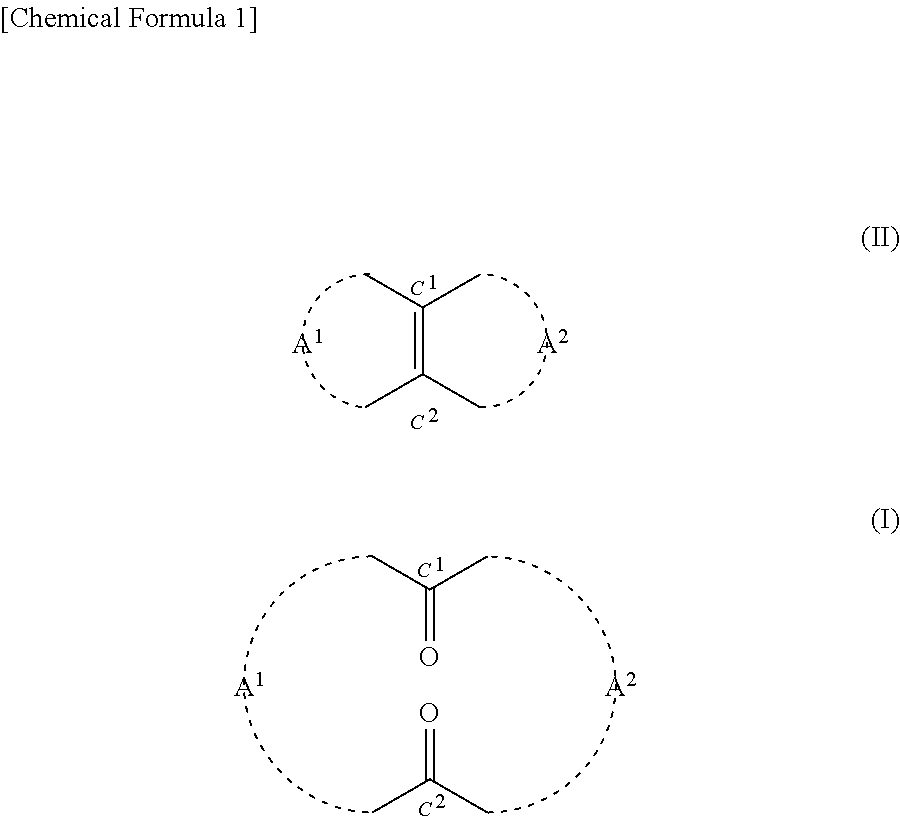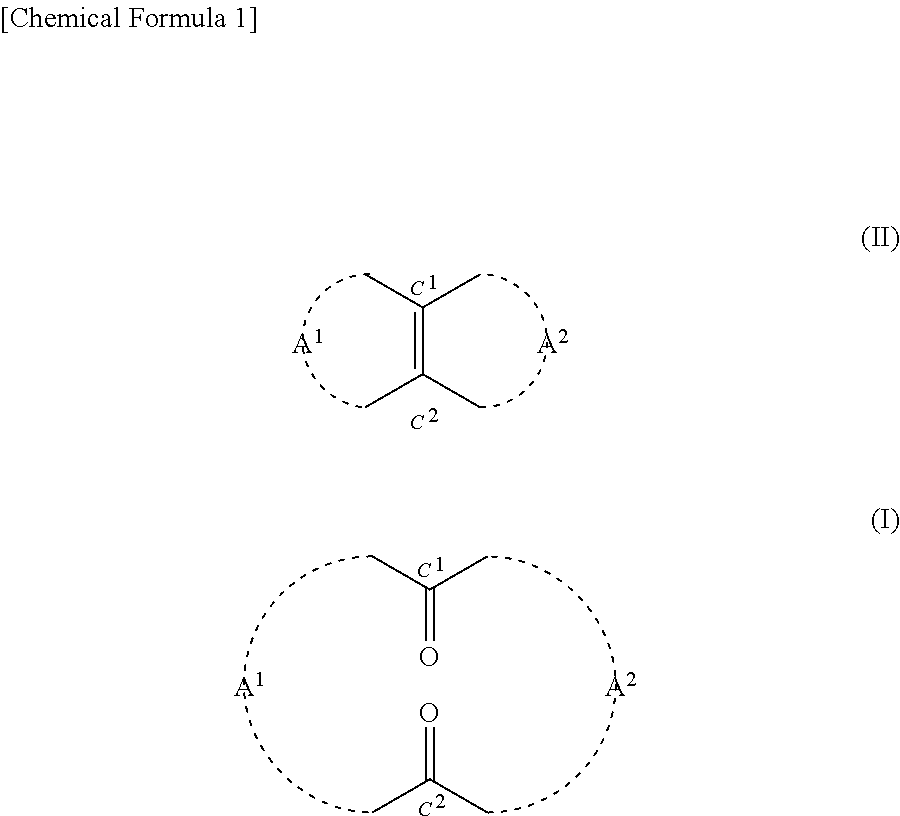Method for producing cyclic diketone compound
a cyclic diketone and compound technology, applied in the preparation of heterocyclic compounds, organic compounds/hydrides/coordination complexes, physical/chemical process catalysts, etc., can solve the problems of large power consumption required for generating ozone, and methods cannot be said to be industrially suitable from the viewpoint of safety, cost, environment, etc., to achieve the effect of improving reaction yield
- Summary
- Abstract
- Description
- Claims
- Application Information
AI Technical Summary
Benefits of technology
Problems solved by technology
Method used
Image
Examples
example 1
[0170]0.2425 g (2.5 mmol) of 35% by mass hydrogen peroxide solution was added to 0.0124 g (0.05 mmol) of orthotungstic acid (H2WO4). This was stirred at 20° C. for 20 minutes. Then 3.9 g of t-butyl alcohol and 0.22 g (1.0 mmol) of 14-methylbicyclo[10.3.0]pentadecene[1(12)] were added to the mixture. This was stirred at a reaction temperature of 40° C. for 80 hours. After the completion of the reaction, 10 ml of 10% by mass sodium sulfite aqueous solution was added to the mixture in an ice bath and thus it was quenched. Thereafter, an organic layer was extracted from the mixture using 30 ml of diethyl ether. Then after being dried with magnesium sulfate, the organic layer was filtrated. Thereafter, the solvent was removed from the filtrate under reduced pressure, and thus 0.3 g of crude product was obtained. The 3-methyl-1,5-cyclopentadecanedione (the compound of formula (1)) contained in the crude product had a yield of 77.9%. The reaction formula is shown below.
[0171]Furthermore, t...
examples 2 to 13
[0173]For producing the 3-methyl-1,5-cyclopentadecanedione (the compound of formula (1)), the reaction was carried out in the same manner as in Example 1 except that the conditions were changed as indicated in Table 1. The results are indicated in Table 1.
TABLE l35% bymassHydrogenTungstic AcidYield ofPeroxideCompound orReactionReactionReactionCompound ofExampleSolutionAcid CatalystSolventTemperatureTimeFormula (1)Ex. 235 wt %H3PW12O40(nH2O)tBuOH100° C. 18hr13.6%H2O2(0.2 mmol)(3.9 g) (4 mmol)Ex. 335 wt %Na2WO4tBuOH90° C.21hr6.8%H2O2(0.1 mmol)(3.9 g)(4.5 mmol) Ex. 435 wt %H2WO4tBuOH20° C.165hr43.6%H2O2(0.2 mmol)(3.9 g) (5 mmol)Ex. 535 wt %H2WO4tBuOH20° C.284hr53.4%H2O2(0.5 mmol)(3.9 g) (7 mmol)Ex. 635 wt %H2WO4tBuOH40° C.56hr70.2%H2O2(0.2 mmol)(3.9 g)(2.5 mmol)Ex. 735 wt %H2WO4tBuOH40° C.95hr78.6%H2O2(0.1 mmol)(3.9 g)(2.5 mmol)Ex. 835 wt %H2WO4tBuOH40° C.64hr69.9%H2O2(0.01 mmol)(3.9 g)(2.5 mmol)Ex. 935 wt %CF3COOHtBuOH40° C.46hr20.0%H2O2(0.2 mmol)(0.78 g) (2.5 mmol)Ex. 1035 wt %H3...
examples 14 and 15
[0175]The reaction was carried out in the same manner as in Example 1 except that each compound of formula (II) indicated in Table 2 was used instead of the 14-methylbicyclo[10.3.0]pentadecene[1(12)]. The results are indicated in Table 2.
TABLE 2YieldCompound ofReactionofExampleFormula (II)TimeTargetTargetEx. 14100 hr 5.0%Ex. 15 28 hr12.0%
[0176]Based on the results indicated in Table 2, it was confirmed that according to the method of the present disclosure, the compound of formula (I) can be produced using hydrogen peroxide in the presence of a tungstic acid compound.
[0177]
PUM
| Property | Measurement | Unit |
|---|---|---|
| Molar ratio | aaaaa | aaaaa |
Abstract
Description
Claims
Application Information
 Login to View More
Login to View More - R&D
- Intellectual Property
- Life Sciences
- Materials
- Tech Scout
- Unparalleled Data Quality
- Higher Quality Content
- 60% Fewer Hallucinations
Browse by: Latest US Patents, China's latest patents, Technical Efficacy Thesaurus, Application Domain, Technology Topic, Popular Technical Reports.
© 2025 PatSnap. All rights reserved.Legal|Privacy policy|Modern Slavery Act Transparency Statement|Sitemap|About US| Contact US: help@patsnap.com



